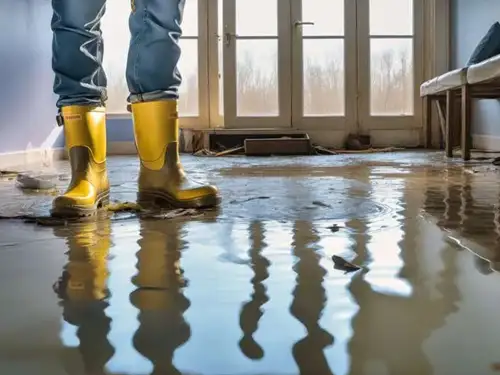States we serve: VA, MD, DC, PA, NC, SC, and WV
Six Trends Affecting Commercial Property Insurance
January 10, 2024 · 8 minute read · Commercial Lines

Have questions?
Contact us today.
Phone: (703) 471-0050
Please note: coverage cannot be bound or altered online. A service representative will need to contact you to finalize your request.
Commercial property insurance plays a critical role in protecting the assets of your business. In the event of a loss, this coverage can help you replace or rebuild your damaged or destroyed property and restore your operations in a timely manner. It is crucial to have sufficient commercial property insurance and understand the main factors influencing this line of coverage. Here are some of the latest trends impacting the commercial property insurance space.
Catastrophic Losses
Extreme weather events can cause severe property damage and losses. The increasing frequency and severity of these catastrophes have continued to place upward pressure on commercial property insurance costs. According to the National Oceanic and Atmospheric Administration, the United States saw a record number of billion-dollar weather and climate disasters in 2023, with the total cost of such events exceeding $57 billion.
The National Centers for Environmental Information (NCEI) has published data detailing billion-dollar weather and climate disasters in 2023. Click here to view the report. This information helps explain what property insurers are trying to deal with as weather and climate disasters increase in frequency and severity.
Inflation Issues
Like other lines of coverage, the commercial property insurance market has been significantly impacted by inflation issues in recent years, prompting higher premiums and claim expenses when losses occur. These issues have been brought on by a combination of fluctuating material demand, supply chain complications, surging prices for various building resources, and rising labor costs across the construction sector. Although increased material costs and wage growth trends have softened since their peak in 2021, they continue to exceed pre-pandemic levels, thus affecting property repair and replacement expenses and related claims.
Reinsurance Capacity and Pricing Challenges
The surge in extreme weather events, substantial underwriting losses, and prolonged inflation issues have proven especially challenging for the commercial property reinsurance segment to navigate. Many reinsurers have consequently begun limiting their capacity for these exposures or eliminating capacity altogether, all while rates continue to surge. These rising reinsurance costs are typically passed on to policyholders.
Labor Shortages
The last few years have seen widespread labor shortages. Many employers have increased their workers’ wages to help minimize these shortages. Despite offering higher salaries, the Associated General Contractors of America reported that 9 out of 10 contractors have still struggled to find skilled employees, giving them no choice but to delay projects. These labor challenges have resulted in construction projects becoming increasingly expensive and taking longer to complete, driving up associated commercial property insurance costs.
Property Replacement Costs
The culmination of inflation issues, supply chain disruptions, and labor shortages have made buildings, other structures, and their contents far more expensive to replace following property losses. As material and labor challenges persist, rising replacement expenses are likely to follow suit, contributing to elevated commercial property costs.
Underinsurance Concerns
Underinsurance has become a growing concern in the commercial property insurance market due to heightened building costs and structural repair and replacement expenses. Specifically, businesses that fail to consider inflation and other segment trends could end up with incorrect or outdated property valuations and related coverage limits, leaving them with inadequate protection and significant out-of-pocket expenses following various losses.
Contact your Leavitt Group insurance advisor for risk management guidance and commercial property insurance solutions.




